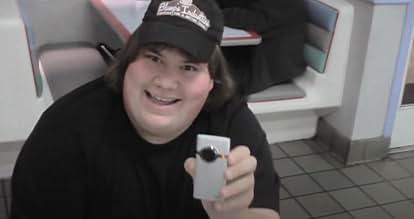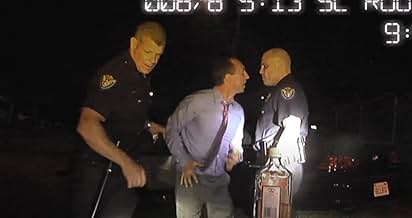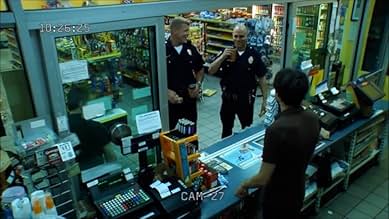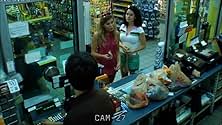अपनी भाषा में प्लॉट जोड़ेंFollows several interweaving story lines over the course of a week in Los Angeles, some including characters carried over from the original film, others featuring actors from the film return... सभी पढ़ेंFollows several interweaving story lines over the course of a week in Los Angeles, some including characters carried over from the original film, others featuring actors from the film returning as different characters.Follows several interweaving story lines over the course of a week in Los Angeles, some including characters carried over from the original film, others featuring actors from the film returning as different characters.
एपिसोड ब्राउज़ करें
कहानी
क्या आपको पता है
- ट्रिवियाFirst nude scenes for Sharon Hinnendael.
फीचर्ड रिव्यू
Look is a TV series that studies the secret lives of seemingly ordinary people when they think no one (or no special someone) is watching them. The complexities of relationships, and especially the hidden betrayals that undermine trust, weaves a thematic ribbon throughout the series. Ostensibly filmed through security and hand-held cameras, the series offers a voyeuristic glimpse into the underside of everyone. Ultimately the series examines the irony of modern technology – with cameras recording our everyday lives, how is it possible for wicked people to behave so badly with uncontested impunity? Ultimately Look reminds us that it is people, not the technology, that define the moral compass of a community, and when good people fail to take a stand against brazen acts of morally bankruptcy, the community suffers everywhere.
Ribald hypocrisy would seem to lie at the core of this community's values, as several people openly flaunt their unguarded disdain for their fellow characters, with menacing disregard to the injuries they inflict upon the people around them, all the while demanding uncompromising devotion from the very ones they betray. Not everyone acts this way, but this theme defines the complexion of each 30 minute episode.
Look, written and directed by Adam Rifkin, who also wrote the film of the same name, loosely follows a dozen or so characters throughout the series, and gradually peels back the layers that make up the façade of their everyday personas, revealing deeper and deeper truths hidden within the dark reaches of each person. The show predicates its concept on the fact that everyone suffers damage of some kind, and we all find clever ways hide to hide it. Look pierces that protective social armor, and unearths the real person inside – sometimes ugly, bitter, pathetic, vulnerable, depraved, and always anxious.
The series addresses much tamer elements as well, and even reveals redeeming moments of stereotypical loser characters. A curious thread ribbons through every episode – that of a homeless man. We learn by the end of the season that this character is there to remind us that people cannot be judged by appearances, and that the wounds that haunt us shape our persona more than we care to admit or even know. In the end, our sympathies and values are turned upside down, and we catch ourselves wondering who are the good guys.
Thankfully, Look does not fall into the Hollywood trap of moralizing the characters' fates. The seediest, ugliest deeds go unpunished. Indeed, the people who suffer the most are typically misunderstood misfits who fall victim of the depraved acts of vulgar selfishness – sometimes inflicted with cold, calculated intent. The series intertwines the lives of otherwise seemingly unrelated characters. This works well most of the times, but sometimes Rifkin pushes it to a fault. In a later episode, for example, in which a half-witted card shark is revealed to be another character's father, the audience gains no new value or insights, and is left wondering if that was a requirement of the plot formula. But in another scene, after coming to her senses, Molly encounters a character while escaping the depravities of her best friend Hanna, she encounters a character that could . . . we won't spoil it for you . . . this scene is skillfully presented, and is all the more engaging because of the secrets we have learned about the characters in the preceding episodes.
The use of security, hand-held, and other cameras to shoot the entire show is intentionally unsteadying, and the technique works well. The series does obviously not use real-life security/embedded cameras, as many actual cameras (such as rear-view automobile back-up cameras) have no video memory capacity, but we get the point. The graininess, odd angles, and shakiness of the hand-held cameras lends credibility to the visual presentation.
For the most part, the acting is well done. Sharon Hinnendeal skillfully portrays Hannah, a beyond belief, self loving, sexed up, manipulative uber-bitch. The paintball attack scenes are also especially realistic. Occasionally the acting goes over the top, and leaves the audience wanting something a little more real. A particular scene, for example, in which a man is coerced to scream out the "N" word by his wife falls outside the bounds of disbelief.
Look is not the best series ever, but it offers a fresh perspective on the human condition, and offers a poignant essay on our over-dependence on technology to solve social problems. Definitely worth the time to watch it.
Ribald hypocrisy would seem to lie at the core of this community's values, as several people openly flaunt their unguarded disdain for their fellow characters, with menacing disregard to the injuries they inflict upon the people around them, all the while demanding uncompromising devotion from the very ones they betray. Not everyone acts this way, but this theme defines the complexion of each 30 minute episode.
Look, written and directed by Adam Rifkin, who also wrote the film of the same name, loosely follows a dozen or so characters throughout the series, and gradually peels back the layers that make up the façade of their everyday personas, revealing deeper and deeper truths hidden within the dark reaches of each person. The show predicates its concept on the fact that everyone suffers damage of some kind, and we all find clever ways hide to hide it. Look pierces that protective social armor, and unearths the real person inside – sometimes ugly, bitter, pathetic, vulnerable, depraved, and always anxious.
The series addresses much tamer elements as well, and even reveals redeeming moments of stereotypical loser characters. A curious thread ribbons through every episode – that of a homeless man. We learn by the end of the season that this character is there to remind us that people cannot be judged by appearances, and that the wounds that haunt us shape our persona more than we care to admit or even know. In the end, our sympathies and values are turned upside down, and we catch ourselves wondering who are the good guys.
Thankfully, Look does not fall into the Hollywood trap of moralizing the characters' fates. The seediest, ugliest deeds go unpunished. Indeed, the people who suffer the most are typically misunderstood misfits who fall victim of the depraved acts of vulgar selfishness – sometimes inflicted with cold, calculated intent. The series intertwines the lives of otherwise seemingly unrelated characters. This works well most of the times, but sometimes Rifkin pushes it to a fault. In a later episode, for example, in which a half-witted card shark is revealed to be another character's father, the audience gains no new value or insights, and is left wondering if that was a requirement of the plot formula. But in another scene, after coming to her senses, Molly encounters a character while escaping the depravities of her best friend Hanna, she encounters a character that could . . . we won't spoil it for you . . . this scene is skillfully presented, and is all the more engaging because of the secrets we have learned about the characters in the preceding episodes.
The use of security, hand-held, and other cameras to shoot the entire show is intentionally unsteadying, and the technique works well. The series does obviously not use real-life security/embedded cameras, as many actual cameras (such as rear-view automobile back-up cameras) have no video memory capacity, but we get the point. The graininess, odd angles, and shakiness of the hand-held cameras lends credibility to the visual presentation.
For the most part, the acting is well done. Sharon Hinnendeal skillfully portrays Hannah, a beyond belief, self loving, sexed up, manipulative uber-bitch. The paintball attack scenes are also especially realistic. Occasionally the acting goes over the top, and leaves the audience wanting something a little more real. A particular scene, for example, in which a man is coerced to scream out the "N" word by his wife falls outside the bounds of disbelief.
Look is not the best series ever, but it offers a fresh perspective on the human condition, and offers a poignant essay on our over-dependence on technology to solve social problems. Definitely worth the time to watch it.
टॉप पसंद
रेटिंग देने के लिए साइन-इन करें और वैयक्तिकृत सुझावों के लिए वॉचलिस्ट करें
- How many seasons does Look have?Alexa द्वारा संचालित
विवरण
- चलने की अवधि30 मिनट
- रंग
इस पेज में योगदान दें
किसी बदलाव का सुझाव दें या अनुपलब्ध कॉन्टेंट जोड़ें



































